|
|
In this Forum we discuss the silver of the United Kingdom, as well as British Colonial silver and Old Sheffield Plate. Past British - Irish Sterling topics/threads worth a look. |
|
|
| How to Post Photos | Want to be a Moderator? |
|
|
In this Forum we discuss the silver of the United Kingdom, as well as British Colonial silver and Old Sheffield Plate. Past British - Irish Sterling topics/threads worth a look. |
|
|
| How to Post Photos | Want to be a Moderator? |

|
 SMP Silver Salon Forums SMP Silver Salon Forums
  British / Irish Sterling British / Irish Sterling
  Henry Plumpton Henry Plumpton
|
| next newest topic | next oldest topic |
| Author | Topic: Henry Plumpton |
|
ahwt Posts: 2377 |
  
[08-0601] The garden is calling for help, but the weather continues to quiet my desire to answer. Looking through old silver is, for now, better alternative. At least until the Nashville Lawn and Garden show this weekend. I do not know the chances of doing this, but I purchased the two tongs above at separate times and they both have the mark of H∙P. The lower mark goes with the lower tongs in the first picture and the higher mark goes with the other one. In both cases the top of the H and P is missing. Henry Plumpton from London seems to be the silversmith and he specialized in tongs. IP: Logged |
|
DB Posts: 252 |
  
The expert on these scissor-shaped tongs is Dr. David Shlosberg. He calls them teatongs, as this is the terminus technicus in old documents. He has an excellent website ,SilverTeaTongs.com, and also has written a book about it. Might be worth your while. IP: Logged |
|
agphile Posts: 798 |
  
Henry Plumpton was free 1740 and still recorded in the Parliamentary list of 1773. He will have had an earlier, pre 1761 mark in the missing smallworkers' register. Your HP mark looks like the one David Shlosberg suggests was the earlier. The outline of the lion passant punch also fits in with this. On style I would suggest your first pair is 1750s and the second 1740s but if Shlossy spots this thread you may get a more informed opinion. IP: Logged |
|
ahwt Posts: 2377 |
  
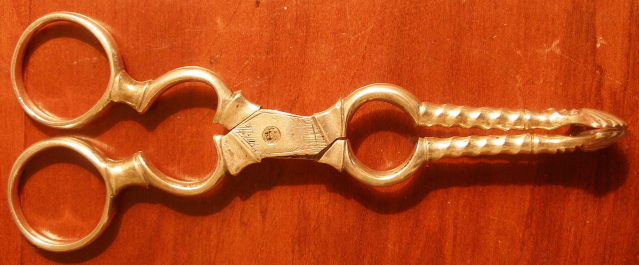 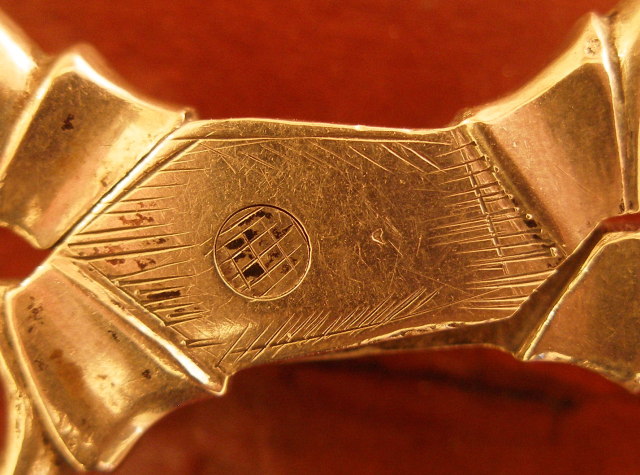 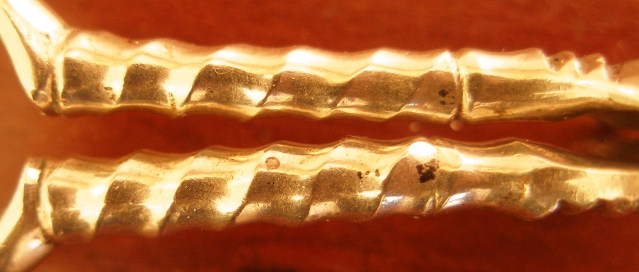 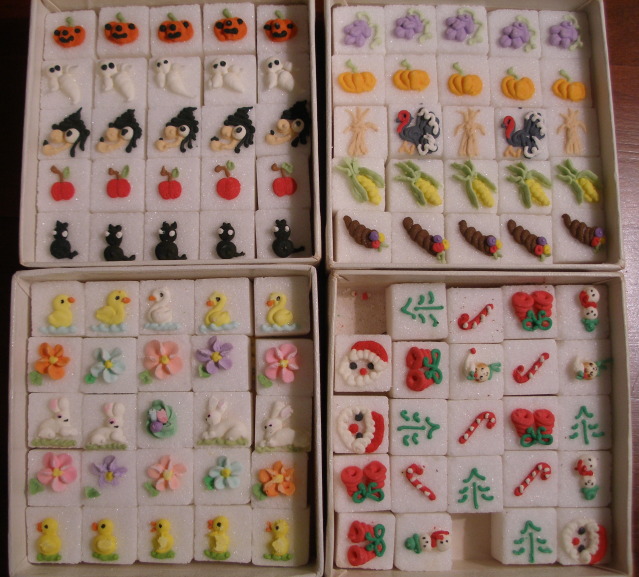 Thanks all for the fascinating comments. I posted another tea tongs above and while unmarked it is most likely English. I must admit I brought this one because it was unmarked, perhaps a little more primitive than most and with that there was the possibility that it was made in the colonies. I now realize that many tea tongs in Britain are unmarked so likelihood that it is American is remote. This one has twisted legs that are attractive and these must have been made in a different manner than the twisted handles found on many mid-1800s spoons in the U.S. These have a softer look. It also does not have the hidden pivot point as the two Plumpton tongs, however that does not seem to have affected its longevity as it still functions properly. In another thread the use of sugar cubes was questioned. I posted a picture on sugar cubes above that my wife has "collected". I say collected as you will notice several of the Christmas cubes are missing - I ate them before I was told they were to be looked at and not to be eaten. We now use just the plain sugar cubes. IP: Logged |
|
agphile Posts: 798 |
  
That's an interesting pair of unmarked tongs. If English, the shape of the hinge and the plain finger rings would suggest an early date, perhaps 1720s, but I have never seen twisted shafts like this. And that sort of decoration would be more likely on later tongs. Perhaps provincial or even colonial American of the mid 18th century using a by then old fashioned form but going to town on the decoration? However, I have no idea what tongs from elsewhere might have looked like and I'd have to say that the overall shape and proportions don't seem to me to be quite in the English tradition. Is there any possibility the tongs have had their shafts replaced? Not something I would like to try and judge from a photo, but most old tongs have suffered some damage and repair during their lives. I think Shlossy might be interested to see these if you contacted him via his website. I've always found him very helpful (and can occasionally boast that he used one or two of my pieces for illustrations in his book). As for the sugar cubes, I don't think I could have resisted a nibble. [This message has been edited by agphile (edited 03-03-2010).] IP: Logged |
|
DB Posts: 252 |
  
These tongs look Dutch to me - by the way neither Dr. Shlosberg nor I have any business interest, but I know many of your contributors are active dealers. Dr. Shlosberg has written extensively for the SSC Journal, which I edit - and is generally very helpful to all collectors, as he has a deep interest in his field. I repeat this again - as in another post - to suspect behind every harmless inquiry or helpful hint a business interest is a little far-reaching to say the least. IP: Logged |
|
Scott Martin Forum Master Posts: 11573 |
  
quote: No one said you did.
Generally the posting of email addresses foster offline communications which doesn't support the open online SSF forum discussions IP: Logged |
|
ahwt Posts: 2377 |
  
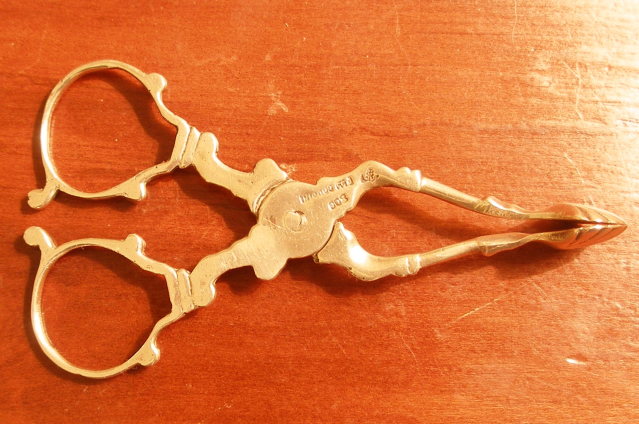 Above is the last set of tea tongs that I have of the scissor type. These are only 3 ¼” inches long whereas the largest English tongs are a little under 5” long. These are marked 800, Corrini and have what looks like a humming bird feeding at a flower. The other symbol is not clear to me. The name Corrini suggests Italian origin to me. DB thanks for your comment about the possible Dutch connection of the tongs with the twisted legs. In another recent thread (Reviving the twisted spoon discussion for an ID) Dale points out that inscriptions using dots are “Scandinavian, or more precisely Baltic”. I looked again at these tongs and they have pin pricks on the inside of one of the shell ends of “SC” and the other has the date “1820”. These no doubt would indicate when SC acquired the tongs and might indicate the approximate date they were made. The Dutch I think also picked up this practice of inscribing with a pin prick, as I think did other northern European countries, so these tongs most likely came from northern Europe and not England. One observation I might make about posting e-mail addresses is from my experience with a non-profit organization that I assist. We post our e-mail address on our website and as a result are deluged with spam. Our internet provider has an additional charge for filtering spam and we are looking into other ways; i.e. cheaper ways to eliminate spam. We pushed up our date to visit the Nashville Lawn and Garden Show to today and can report that the displays were beautiful. What a treat to be treated to an early spring. IP: Logged |
|
ahwt Posts: 2377 |
  
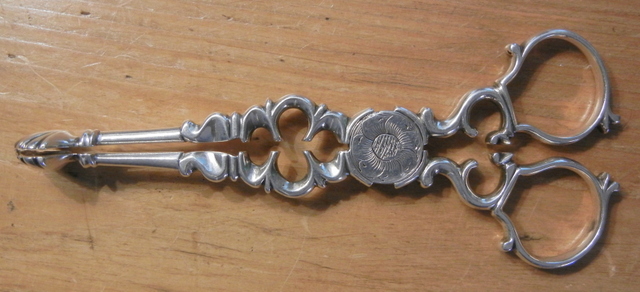 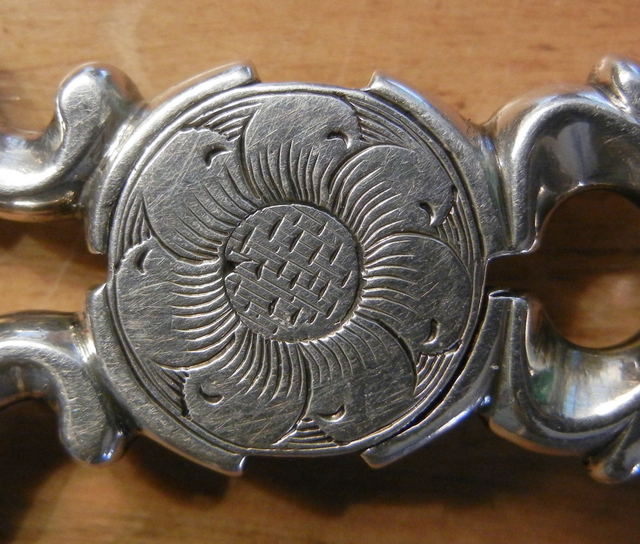 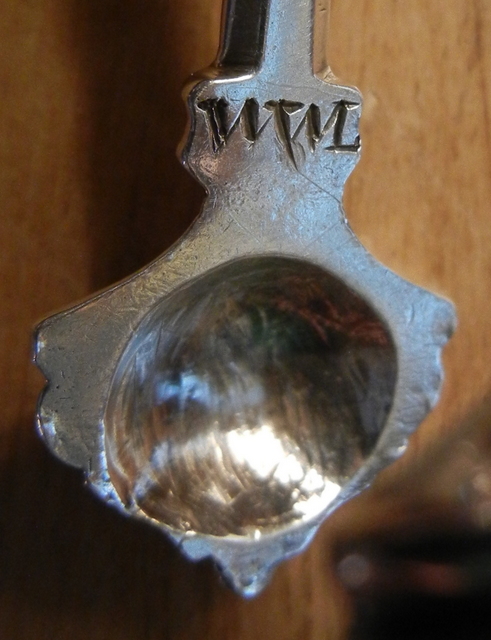 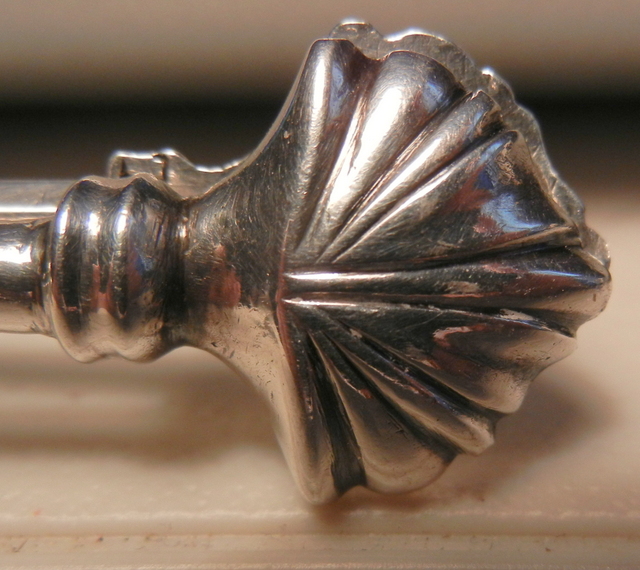 It has been some time since I found any tea tongs, but this pair seemed interesting. They are unmarked, but from Dr. Shlosberg’s book Eighteenth Century Silver Tea Tongs several things can be inferred. The rings fall in the category of truncated pear shaped rings and the shafts have quatrefoil shapes adjoining the hinge. I think these characteristics point to a date of 1760 or thereabouts. The hinge is also interesting in that it has what I think could be termed a flower head engraving. Dr. Schlosberg states that this decoration was typical of Irish tongs from the 1755 period. The grips seem to be a variation of what Dr. Schlosberg calls the pointed four lobed shell and is in line with his observation that designers of grips made them as individualistic as possible. These tongs also have a engraving that may be WWL probably for the initials of one of the owners. This engraving may have been added later as it is the only part of the tongs that seems strange. Whoever did the engraving seems to have made the Ws too big with the result that not enough room was left for the L. IP: Logged |
|
Polly Posts: 1971 |
  
Great tongs! I have a number of tongs of this sort, and I've corresponded with Dr. Schlosberg (what a nice man). I think you're right about the date, but I have several examples with similar engraved flowers that have the marks of London silversmiths, so I don't think you can conclude that these are Irish. The Irish examples I've seen online often seem extra fancy, with lots of loops and curlicues--even more than this pair (which may or may not mean anything). I've noticed not infrequently that the monograms are much cruder than the rest of the craftsmanship, and I've wondered whether it was common for someone other than the original maker or engraver to add a monogram. IP: Logged |
|
ahwt Posts: 2377 |
  
Thanks for the information Polly. Dr. Shlosberg's book is really great. Another book on tongs that became available after the earlier tea tongs is "Georgian Silver Sugar Tongs" by Graham Hodges. It is amazing to me how many tongs these two have documented. The tongs I showed have no markings at all. They seem to me to be well made and may have been made by a smith away from a big city and the feeling by the customer that everything must be assayed. It could be that if you did not have your silver assayed, you may not want to put your name on it. [This message has been edited by ahwt (edited 07-19-2018).] IP: Logged |
|
Polly Posts: 1971 |
  
Your pair is so well made, it was obviously made by someone who knew what they were doing. My guess would be that the maker was one of the major makers of tongs, but of course that's just a guess. I have no idea why they didn't mark or assay it. I do have a few unmarked pairs and pairs that lack the assay mark, so I know it did happen. Yours are in great condition, too. Nice tongs! Agree about the Hodges book (and, of course, the Schlosberg book). IP: Logged |
All times are ET | next newest topic | next oldest topic |
  |
|
Ultimate Bulletin Board 5.46a
|
1. Public Silver Forums (open Free membership) - anyone with a valid e-mail address may register. Once you have received your Silver Salon Forum password, and then if you abide by the Silver Salon Forum Guidelines, you may start a thread or post a reply in the New Members' Forum. New Members who show a continued willingness to participate, to completely read and abide by the Guidelines will be allowed to post to the Member Public Forums. 2. Private Silver Salon Forums (invitational or $ donation membership) - The Private Silver Salon Forums require registration and special authorization to view, search, start a thread or to post a reply. Special authorization can be obtained in one of several ways: by Invitation; Annual $ Donation; or via Special Limited Membership. For more details click here (under development). 3. Administrative/Special Private Forums (special membership required) - These forums are reserved for special subjects or administrative discussion. These forums are not open to the public and require special authorization to view or post. |
|
copyright © 1993 - 2022
SM Publications
All Rights Reserved. Legal & Privacy Notices |